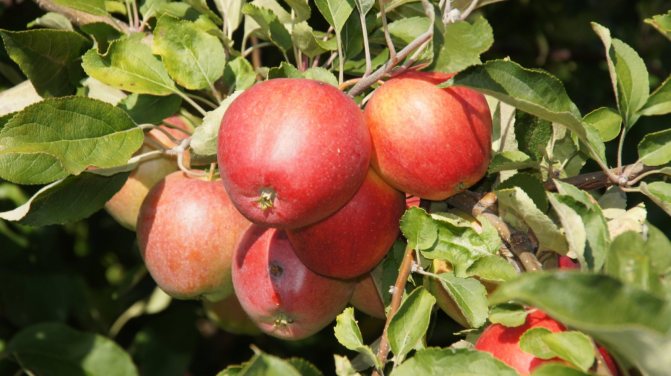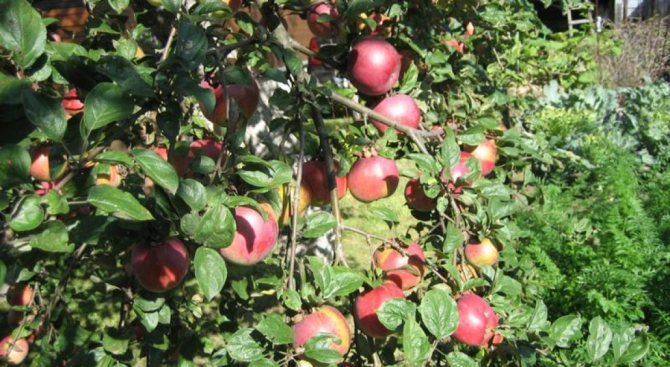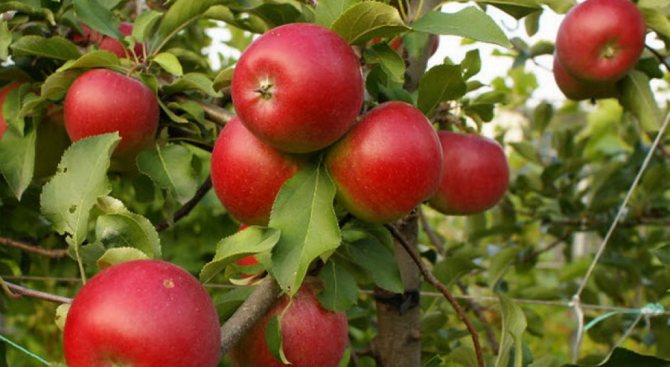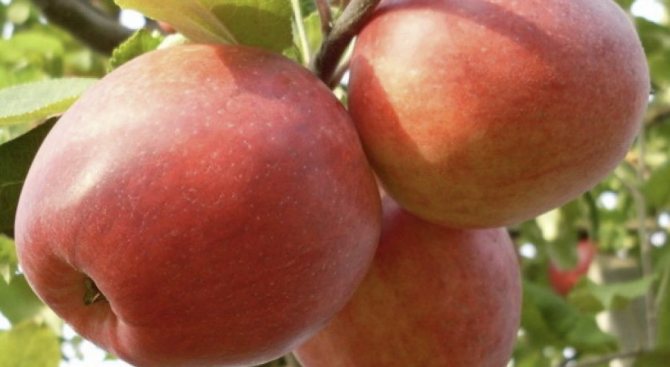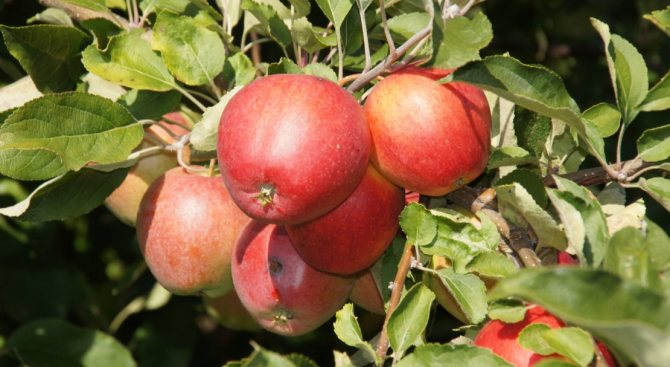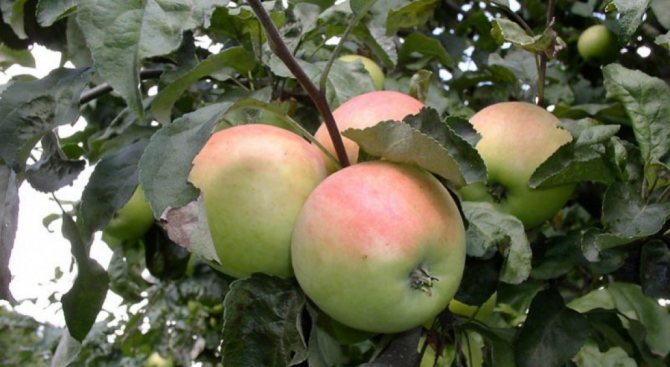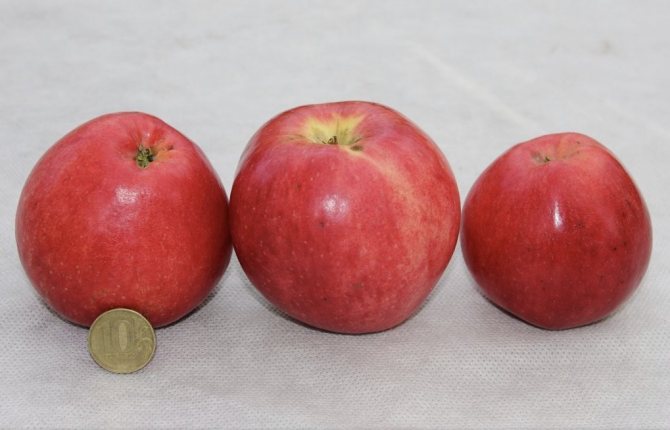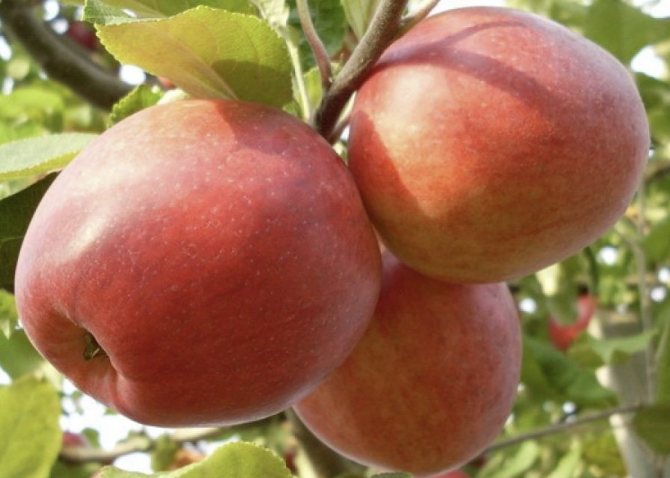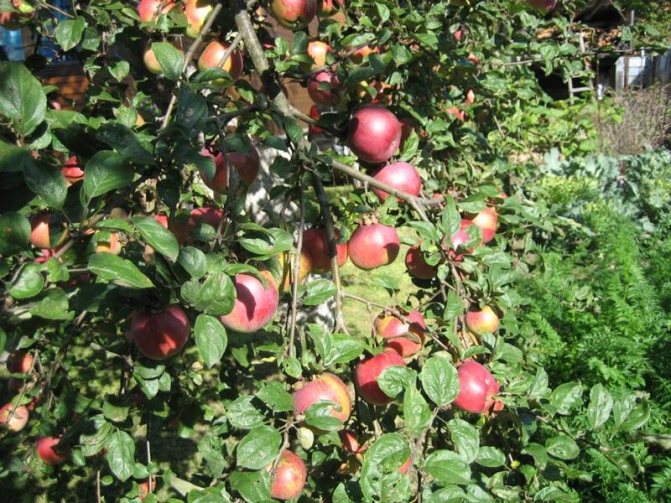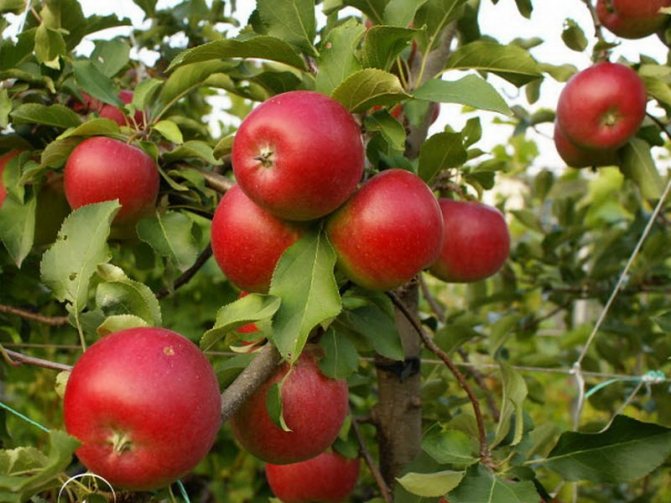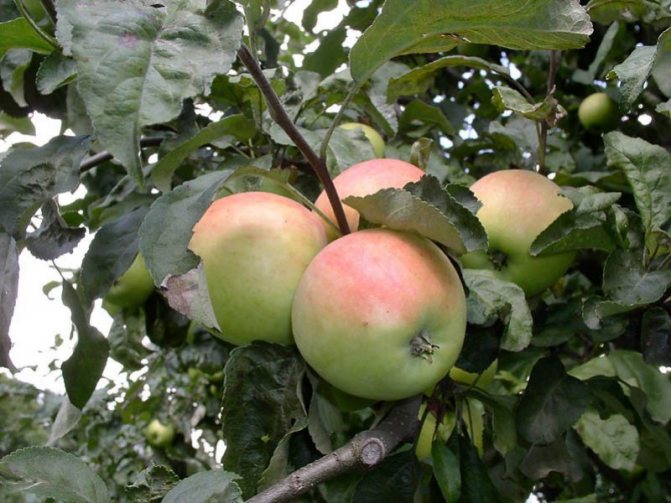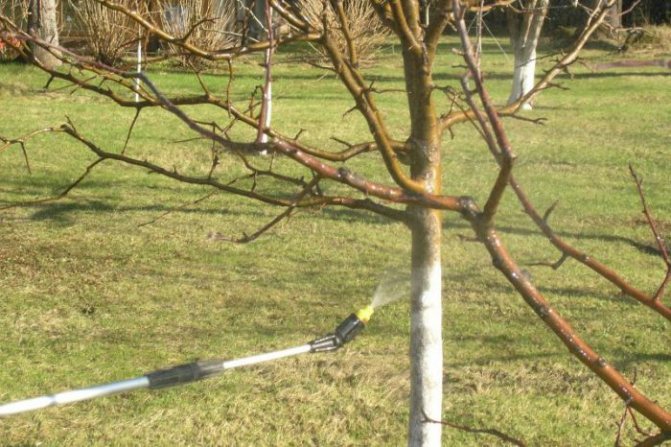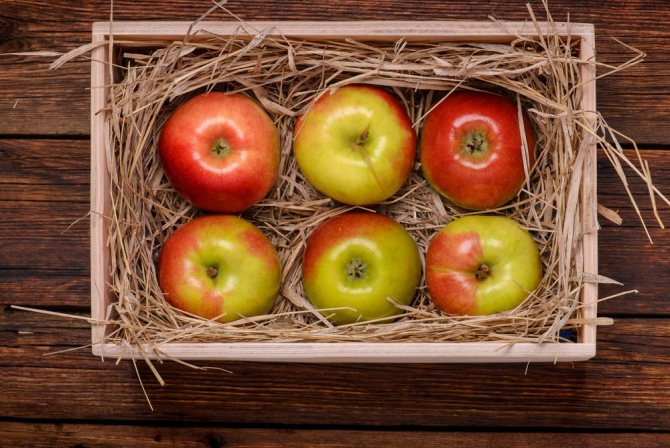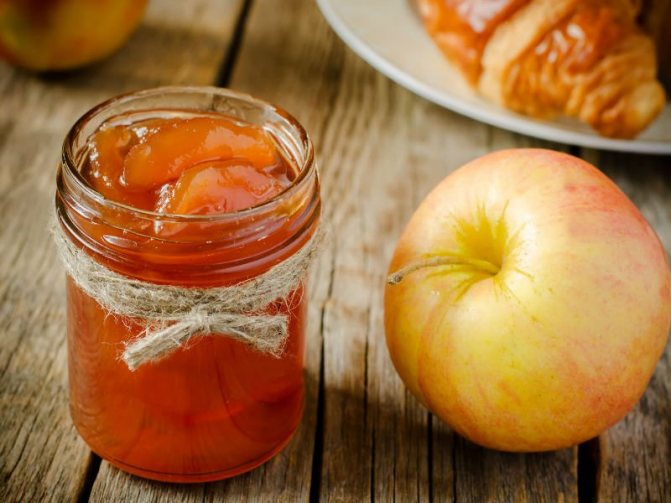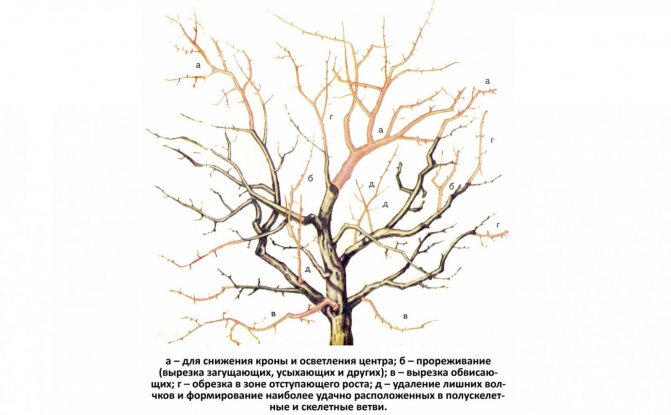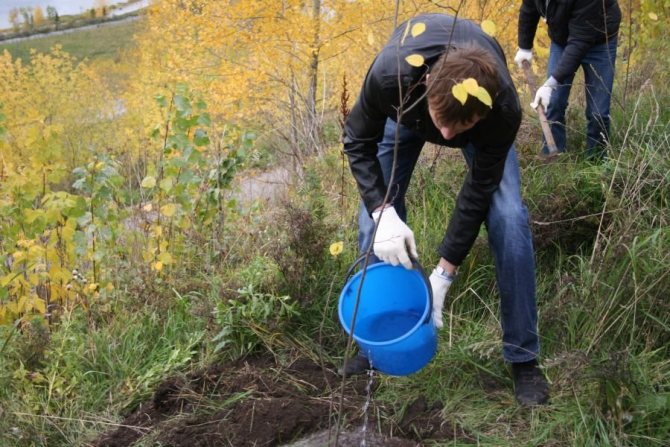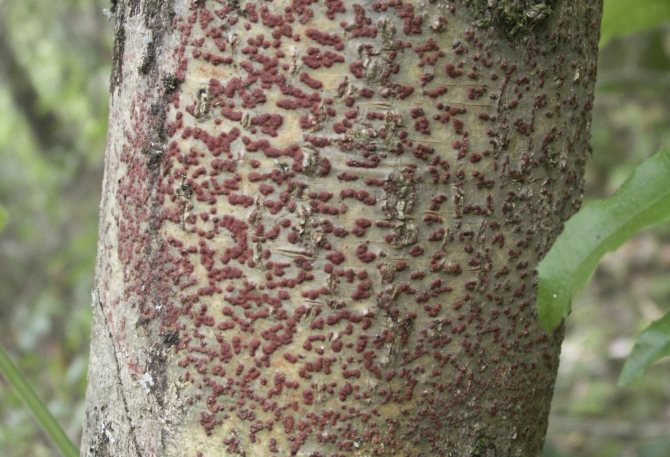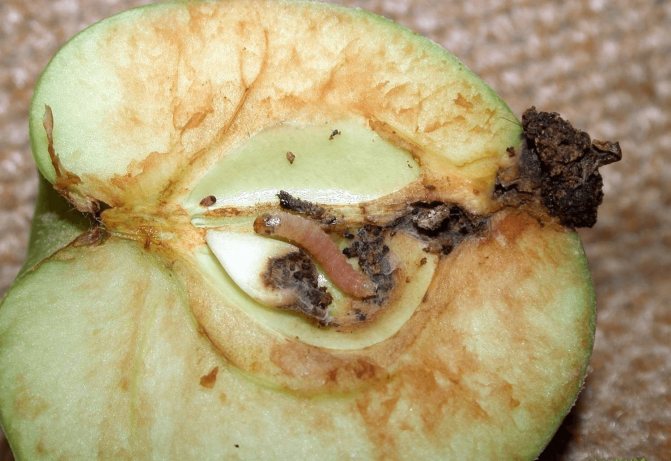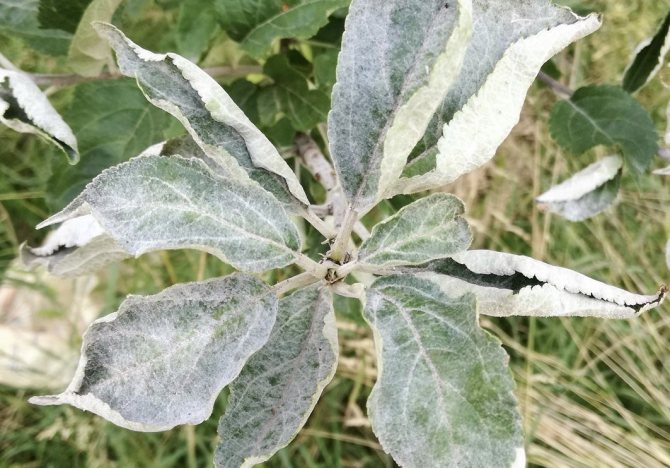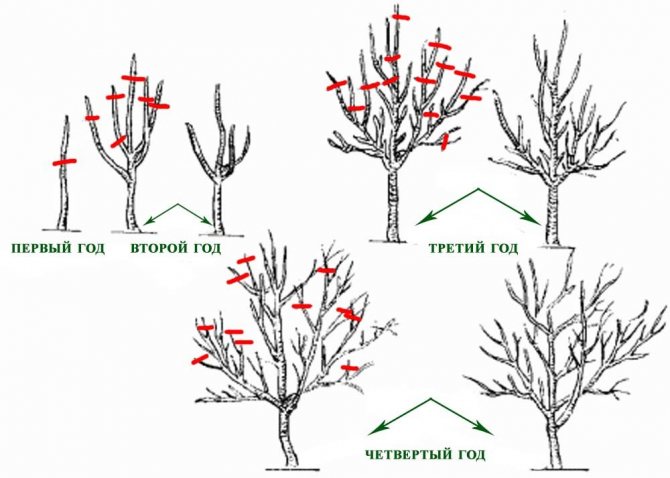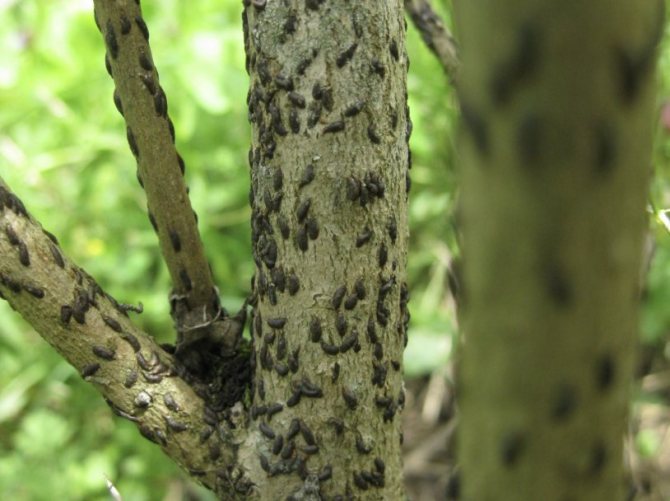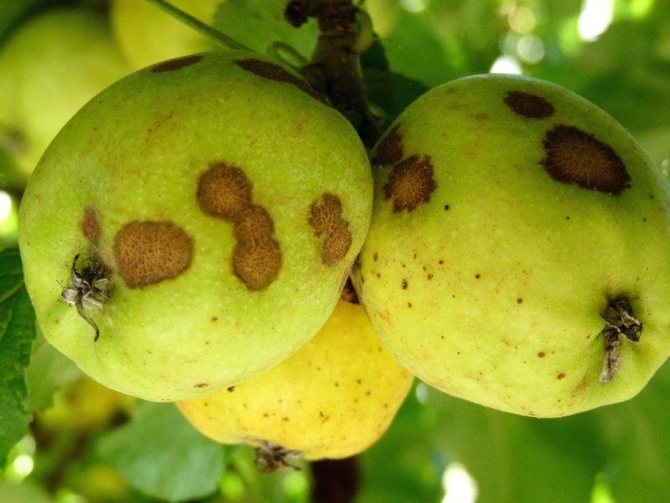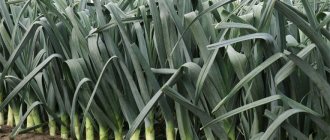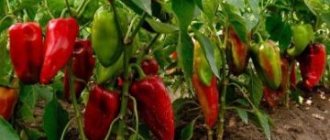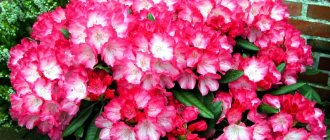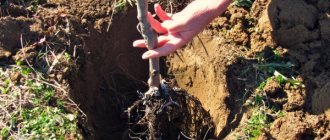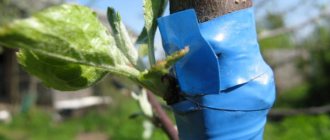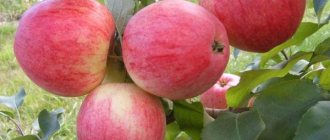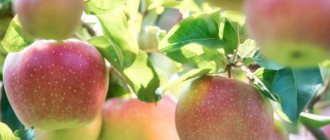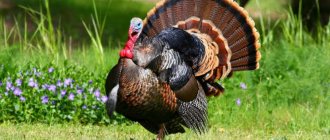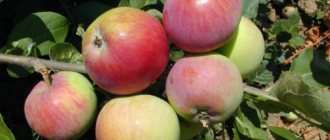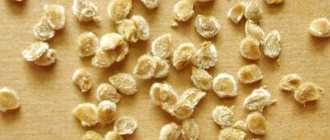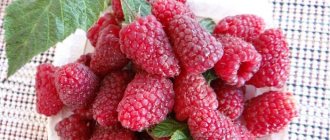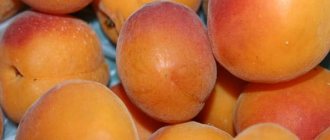Apple variety Pepin saffron can be called one of the most famous and popular not only in Russia, but also in the CIS countries.
Bred by the great breeder I.V. Michurin at the beginning of the 20th century from wonderful parents (Reneth of Orleans and a hybrid of a Chinese woman with a Lithuanian Pepinka), he won the hearts of amateur gardeners and the minds of test breeders.
An excellent combination of quality and taste characteristics from excellent adaptive abilities made him the undisputed leader in demand for private gardening.
Thanks to the ideal qualities, more than 20 varieties and subspecies have been created on the basis of this variety, zoned for almost all regions of our country and neighboring countries, which explains its popularity.
Knowing the basic rules of agricultural technology and the characteristics of the variety, you can easily plant this apple tree in your garden... And this article will help you with this by showing a photo and description of the variety.
Description of apple tree Pepin Saffron
A large number of subspecies have been bred on the basis of Pepin's saffron. Breeders love to use this variety for their experiments, because it is simply unique. Pepin is zoned throughout Russia; it is also grown in Europe. This apple tree can be a decoration for any garden plot. Be sure to plant it if you haven't already.
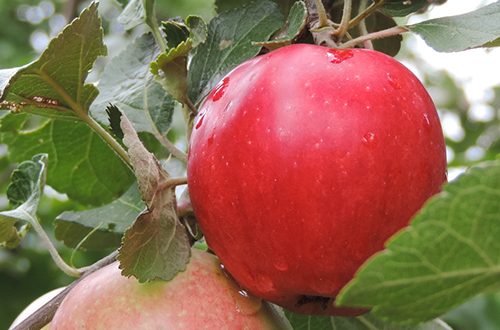
This variety is winter, late ripening. It is popular among gardeners throughout our country and not only. Everyone wants to see him on their site. The apples are very beautiful and delicious.
Features of growing in the regions
Moscow suburbs
Pepinka apple tree near Moscow grown without any special agrotechnical measures, because the climatic conditions and soil resources are quite consistent with the requirements of this variety. The only point worth paying attention to is the acidity of the soil.
Advice! If necessary, it is worth adding lime compounds to the soil.
Ural and Siberia
For regions with harsh climates, there is special zoned subspecies of Pepin saffron, which is endowed with such qualities as frost resistance, adaptability to sudden temperature changes and harsh wintering.
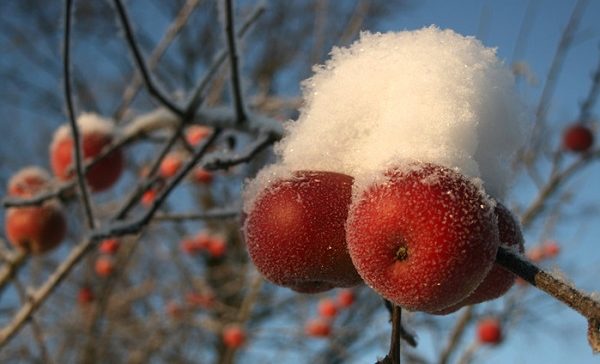

For the Urals and Siberia, a frost-resistant subspecies of Pepin saffron was bred.
Main characteristics
This variety has both advantages and disadvantages. First about the benefits:
- the variety is fast-growing;
- its yield is high;
- fruits have excellent commercial qualities;
- high resistance to pests.
And if we talk about the shortcomings, then, first of all, these are:
- insufficient resistance to some types of fungal diseases and scab;
- high exactingness to the ground;
- the crop is not uniform.
Pepin saffron in height is referred to as medium-sized trees. It does not grow more than 3 m. Its crown has the shape of a ball, it is formed from branches of bright green color with a slight grayish bloom. The shoots are strongly omitted - this is one of the distinguishing features of this variety. The foliage is emerald in color with a slight shade of gray and is elliptical in shape. The structure of the leaves is slightly wrinkled, with a slight edge.
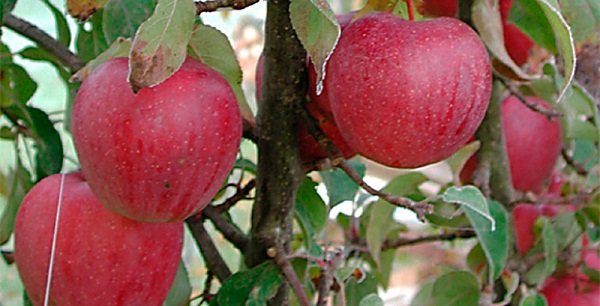

The tree blooms in June. The flowers are unusually white, without any shades. Flowering is always very abundant. Apples grow in different sizes - there are medium, and there are small ones, their weight is in the range of 90-140 grams.They are round in shape, have a slight flattening in the center. The skin is smooth and thin. The pulp is white with a creamy shade, it tastes sweet and sour, its aroma is very pleasant. Tasters highly appreciate the taste of apples. They contain a lot of ascorbic acid and sugar.
The variety is self-fertile, it does not need pollinators, but in the presence of cross-pollination, the yield will definitely increase. Good neighbors for an apple tree can be Antonovka, Kalvil and Slavyanka.
Pepin tolerates winter well, but it may not withstand too severe frosts, so in the northern regions of the country it is better to insulate the trunk for the winter. Specialists differ in one significant drawback - the tree has practically no immunity to scab. Therefore, it is necessary to constantly carry out preventive measures - spraying with special preparations. It is better to regularly examine the tree for the first signs of illness, so it can be saved.
Where can one buy?
Saplings of this variety best purchased from specialized stores and experimental stations, where you can be guaranteed that the planting material meets the qualities that you need.
Nurseries in Ukraine
In Ukraine there are a huge number of nurseries, in which you can buy Pepin's saffron seedlings, for example:
- Green Market;
- Intensive nursery of the Matsenko family;
- Garden.
Landing
Immediately before the procedure, the roots of the tree are immersed in warm water and kept there for some time. The depth of the pit for planting a seedling is 60 cm, it should be at least 100 cm in diameter. Humus or rotted manure is introduced into the top layer of the soil. So she can be enriched with organic substances. A peg is inserted into the hole, to which a young tree will be tied. The seedling is lowered and covered with soil, slightly compacting it. Produce abundant watering. To retain moisture, a small mound is poured around the trunk. This apple tree does not tolerate transplants, so it should be immediately planted in a permanent place.
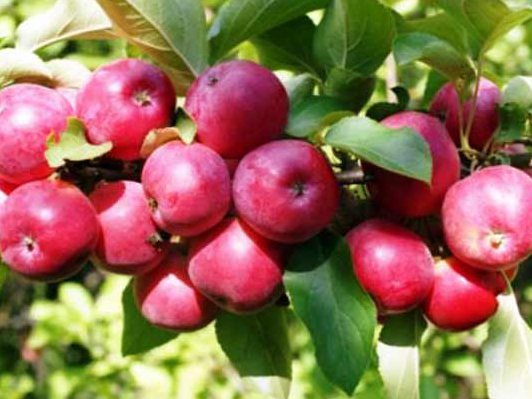

The landing of Pepin's creeping form has its own characteristics. The seedling is placed in the hole at a 45 degree angle. The neck deepens into the soil by 3 cm. The soil is poured into the hole with a cone. During the growth of the seedling, its skeletal branches are attached to the ground with hooks. If the landing was carried out in the spring, then this must be done in July. For autumn planting - immediately. In the fall, to warm the seedling, sprinkle it with earth by 10 cm.
Subspecies and variants
Cultural winter
Zoned in Central and Central Russia, the Volga region, the Moscow region. Demanding on the chemical composition of the soil, does not tolerate high acidity, therefore, if the soil pH in your area is not neutral, before planting liming is necessary.
Creeping
This kind of apple tree tolerates wintering well, has increased resistance to frost.
In order to grow such a variety, special care is required, in which special attention is paid to the formation of the crown in such a way that the skeletal branches "spread" parallel to the soil.
Agrotechnics
During the season, 10-15 buckets of water should be poured under the roots of the tree. The first watering should be done when the buds appear. Watering is carried out 1-2 times in 7 days. In the fall, the tree is fed with organic matter, and in the spring, mineral fertilizers are applied. For feeding, it is better to use trace elements, which are introduced in the form of a solution over the green mass of the tree.
The soil around the tree should be loosened from time to time. Do not forget about the timely removal of weeds. Loosening is best done the next day after watering.
In September, the branches are pruned. In addition, at the same time it is necessary to whitewash the lower part of the trunk.The trunk is examined for injuries, and if they are found, then the damaged areas are treated with garden varnish, which will prevent harmful organisms from entering the wound.
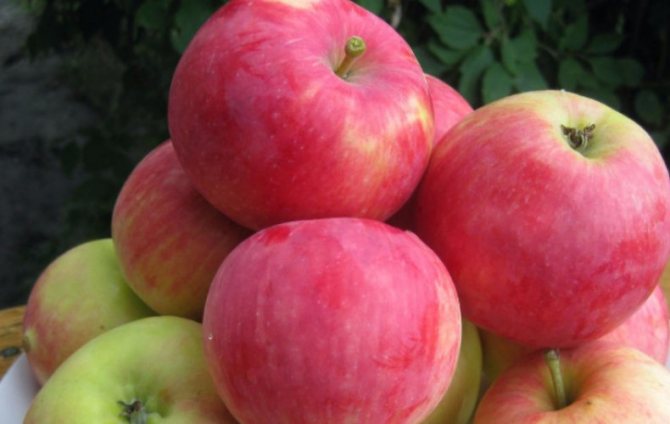

Saffron is pruned in both spring and autumn. In autumn, with the help of pruning, the tree is freed from sick and weakened shoots, because it is they who subsequently become the centers of the spread of diseases. In spring, pruning is formative. They begin to produce it in the fourth year of the growth of the tree. In this case, obsolete shoots should be removed, on which there will no longer be ovaries and damaged branches. You cannot cut off more than 1/4 of the mass of the branches, otherwise the apple tree will die.
Breeding history
The history of this apple variety began more than a century ago, when in 1907 the famous breeder Ivan Michurin decided to cross the winter-hardy Renet variety with the hybrid varieties Pepinka Lithuanian and Chinese gold. It happened in the city of Michurinsk, Tambov province, but after a few decades, new apple trees began to be planted in other cities.
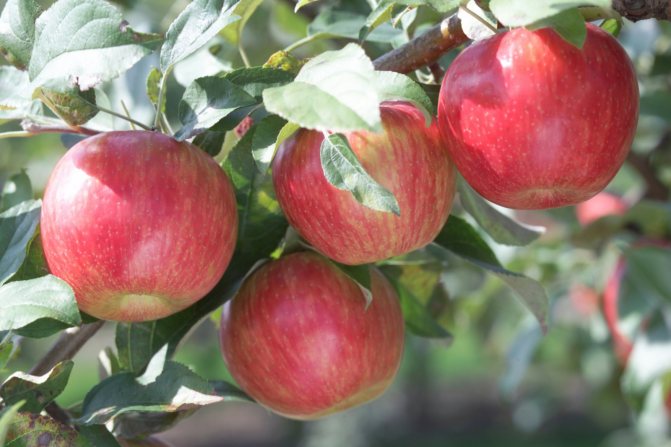

In modern conditions, they are recommended for cultivation in the North-West region, in the Central Black Earth territories, and are also successfully grown in the North Caucasus, Middle Volga, West Siberian lands of Russia.
In addition, you can meet representatives of the variety on the territory of neighboring countries, in particular, Ukraine, Belarus, Kazakhstan. Thus, the apple tree of this variety is successfully cultivated in any climatic region, the main thing is to provide the trees with suitable care.
Did you know? In ancient times, softened apple pulp was used not only for culinary, but also for medicinal purposes to treat burns. The peel of the fruit was also useful for domestic purposes and was actively used to fumigate the premises from insects.
Yield
Pepin saffron has a very good yield, so up to 250 kg of apples can be harvested from one tree. And in the best years, the tree can bring 290 kg of harvest. The apples are very tasty, they have a subtle aroma of wine. Their weight can reach 140 grams.
Fruiting begins in the fourth year. There are no breaks, and the apple tree bears delicious and aromatic fruits every year. Apples are harvested in September, but they reach full ripeness only after a month's maturation. The crop can last up to six months. Because of this, this variety is valued among summer residents.
Testimonials
Konstantin. Luhansk. My favorite variety! Never fails, but the best thing about these apples is long-term storage. We eat fresh apples all winter and spring, and the taste only gets better. The juices are excellent, freezing. Universal in use, there are no problems at all in growing. I recommend Pepin to everyone.
Tatiana Vitalievna. Kemerovo. A couple of years ago I bought a seedling and planted it in the country. I look forward to the first harvest in two years. It does not cause trouble in leaving, planted without any special nuances, hibernates without problems. In the fall, I whiten the trunk, I haven't done any pruning yet. It grows quickly, the flowers were cut off last year, so that the forces would not be pulled. In general, I'm happy so far.
Alexander Mikhailovich. Obninsk. I love these apples for their versatility. They can be eaten, boiled, stored, dried, juiced - they are suitable for all items. And over time, during storage, the smell becomes more pleasant, the pulp does not become cottony, it retains crispness and density. Excellent variety. Michurin's best work, no doubt.
Plant care
Proper care of the apple tree contributes to the full development of the tree and the formation of a healthy harvest. Observing the basic rules of agricultural technology, you can extend the life of the tree, as well as increase the number of fruits.
Watering
A young seedling needs regular irrigation. It is carried out weekly at the rate of 10-15 liters per tree. Mature trees are watered less frequently.Watering is carried out depending on weather conditions. In temperate climates, 1-2 irrigations per month are sufficient, in drought conditions - 2-4.
The need for watering is determined by soil moisture. For this, a clod of earth is squeezed in the palm of your hand. If the soil is crumbling, irrigation is necessary.
In August, watering of the apple tree is stopped. In the winter, irrigation is carried out after leaf fall. For this, the soil under the tree is moistened 0.7–1 m deep. This increases the plant's hardiness and protects the root system from frost.
Pruning
Apple pruning, like many fruit crops, is carried out in autumn or spring. However, spring pruning (in April) will be more favorable.
- In the first year after planting, the central conductor is shortened by 2 buds. The remaining branches are cut by 2/3.
- In the next 3-4 years, formative pruning is carried out. Designate skeletal branches, thin out the crown, remove weak and affected branches. Also, all branches extending from the trunk at 45 or 90 degrees are completely cut into a ring. The maximum size of the hemp is no more than 10 mm.
- In subsequent years, they carry out sanitary and anti-aging pruning. All dried branches are removed, as well as those that grow inside the crown or in the vertical direction. In apple trees over 7 years old, the crown is cut off. Care must be taken to ensure that the crown does not come into contact with other trees. For this, skeletal branches are periodically shortened.
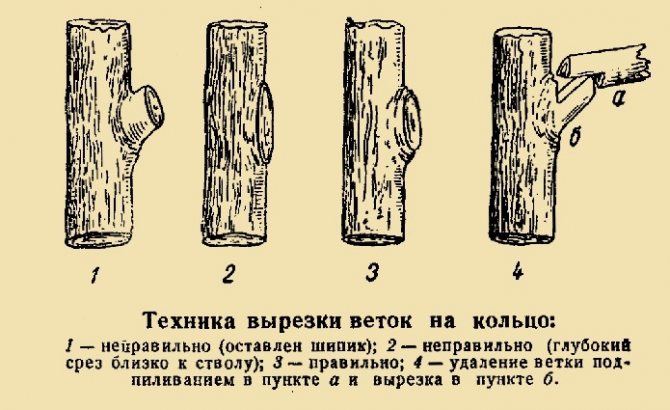

The technique of cutting branches into a ring is so that there are no hemp left during pruning, and the saw cut itself is even and without breaking the surrounding bark
All cuts must be treated with garden pitch. You can buy it in a specialty store or prepare it yourself, for example, by mixing resin, turpentine and pork fat (50:20:13). It is undesirable to use drying oil and rosin.
Spring pruning of an apple tree - video
Top dressing
The apple variety Pepin saffron is very picky about the nutrient composition of the soil and responds well to additional fertilization. With systematic and regular feeding, the tree gives stable high yields.
Organic fertilizers and potassium-phosphorus fertilizers are applied according to the instructions once every 2-3 years.
Fertilization schedule - table
| Period | View | Fertilizer and proportions |
| After flowering | Root | Poultry droppings are diluted with water in a ratio of 1:15. Consumption - 8 liters per tree. |
| After shedding the ovary | Slurry with water in a ratio of 1: 3. One tree needs 10 liters. | |
| September | 5 kg of cow dung or 7 kg of compost compost per 1 m² of near-stem area. |
After watering with nutrient mixtures, the soil in the hole must be loosened or mulched.
Preparing an apple tree for winter
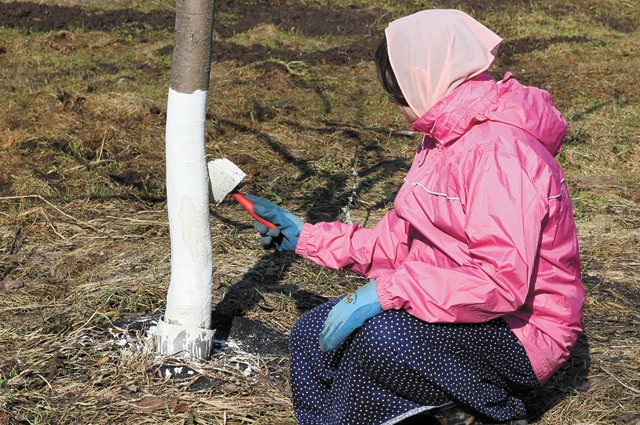

Whitewashing apple trees in autumn protects the bark from diseases and protects against frost cracks (bark cracks)
To prevent damage to the tree in winter, it is pre-prepared.
- Shelter. After leaf fall, young seedlings are completely wrapped with garden covering material or paper. Before wrapping, the branches of the tree are tied into a bunch. Mature trees do not completely wrap around. In severe frosts, only the stem is wrapped up to the skeletal branches. The near-stem area is mulched with peat, clean soil or manure with a layer of 10 cm.
- Rodent protection. To protect against small rodents, universal traps with special fillers are placed in the garden or electronic scarers are installed. To protect against hares after leaf fall, tree trunks are tied with spruce branches, reeds, tar paper or garden netting.
- Whitewash. To protect against frost, it is recommended to whitewash the trunk and bases of the skeletal branches with a garden emulsion with lime or water-based paint. It is recommended to whitewash trees that have reached the age of five.

